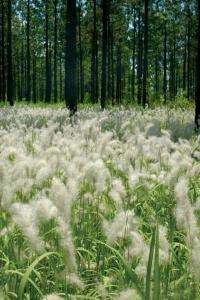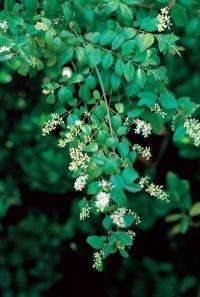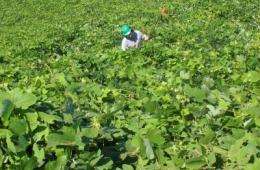Human population the primary factor in exotic plant invasions in the United States

Extensive ongoing research on biotic invasions around the world constantly increases data availability and improves data quality. New research in the United States shows how using improved data from previous studies on the establishment of exotic plant species changes the understanding of patterns of species naturalization, biological invasions, and their underlying mechanisms. The study was published in the open access journal NeoBiota.
Over the centuries, people brought uncounted numbers of nonnative or exotic plant species to the United States for a range of purposes. Usually cultivated for food or ornamental purposes, most of these plants are considered "naturalized" when they reproduce and sustain populations over many generations without direct help from humans. Many others were introduced accidentally.

"About 10 percent of naturalized plant species usually become invasive, and more may be so over time" says Qinfeng Guo, research ecologist with the Forest Service Eastern Forest Environmental Threat Assessment Center and lead author of the article. "This means that they begin to spread considerable distances from the parent plants, often crowding or shading out native plant populations."
Guo and fellow researchers used newly added and improved data to look more closely at plant naturalization patterns across the United States. Focusing on the state-level, they correlated previously used independent variables analyses, such as human population and area with comparable-level date on native and exotic plant richness.
"When we looked at the additional variables for which data just became available, some different patterns emerged, some significant," said Guo."We found that though the number of native plant species is largely controlled by natural factors such as area and temperature, exotic species are predominantly influenced by social factors, such as human population levels and dates when states were first settled."

The researchers concluded that the positive effect of human population on the number of exotic species is probably associated with the primary sources and points of introduction along with human-assisted dispersal in the United States. They also found a strong relationship between foreign and domestic exotic richness, which might indicate that domestic and foreign exotic plants exhibit similar patterns and mechanisms of naturalization across the 48 United States despite their different origins.
Though this particular study was conducted primarily at the state level, different statistical methods produced remarkably similar results regardless spatial correlation. "However, a greater challenge ahead now is how to properly handle greater numbers of variables with increased data availability," said Guo. "Caution is needed when dealing with this data at other spatial scales such as county and county-level."
More information: Guo Q, Rejmánek M, Wen J (2012) Geographical, socioeconomic, and ecological determinants of exotic plant naturalization in the United States: insights and updates from improved data. NeoBiota 12: 41-55. doi: 10.3897/neobiota.12.2419
Provided by Pensoft Publishers
















